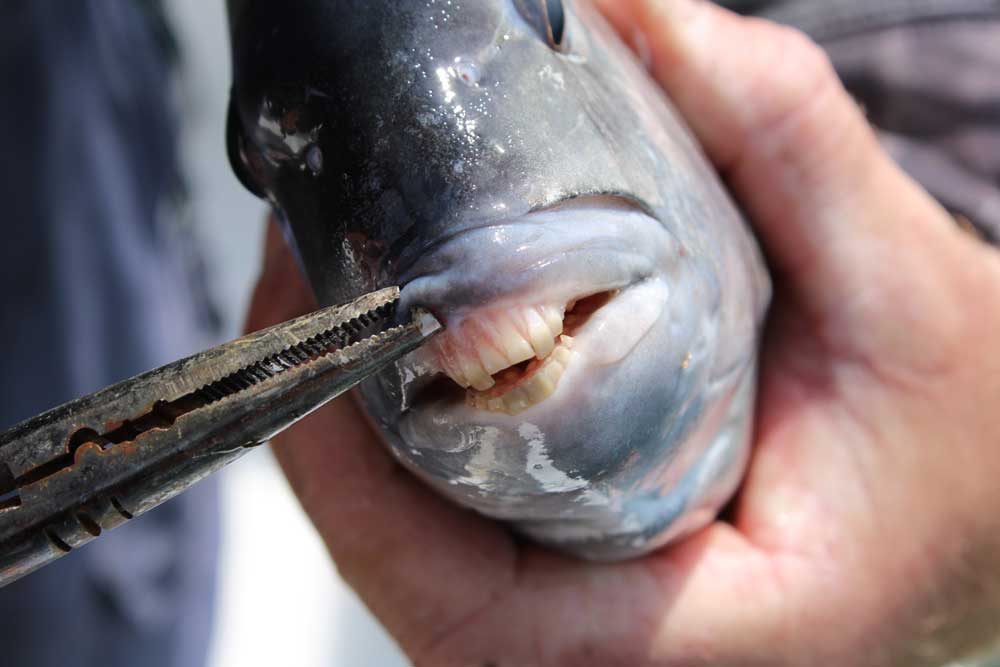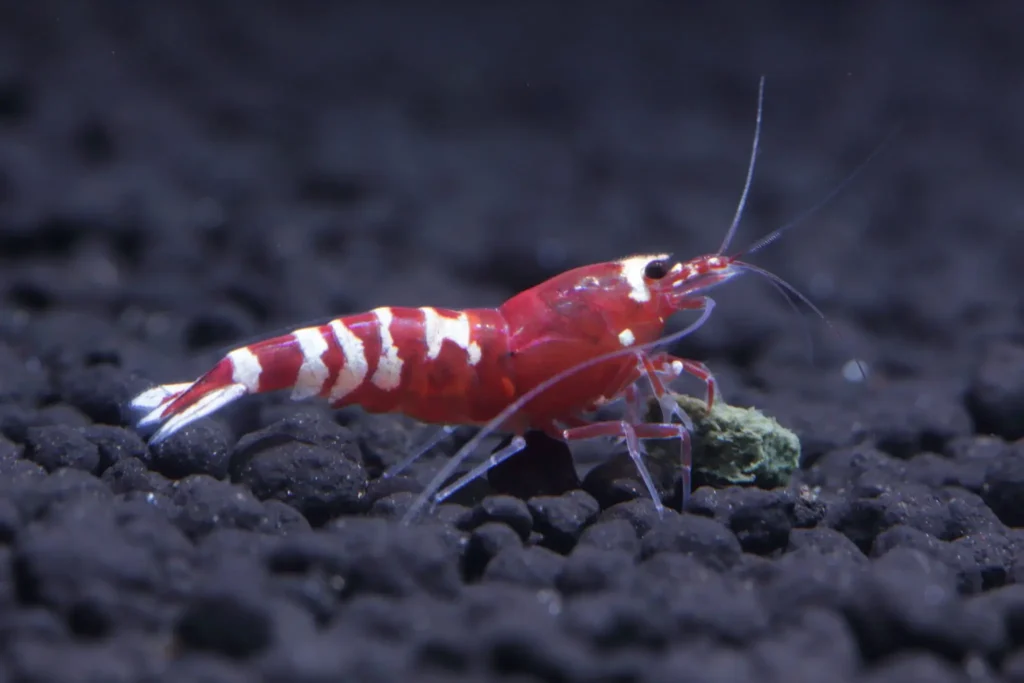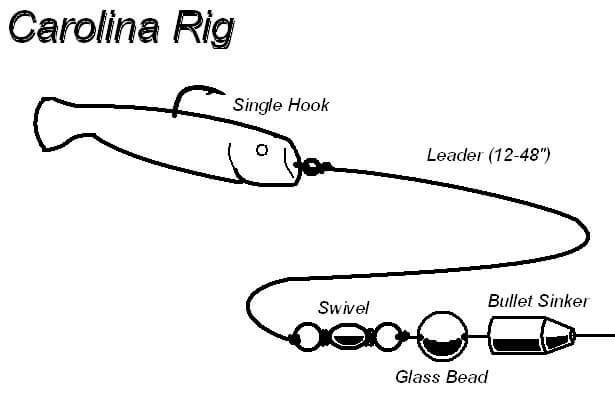
Alright, fellow fishing fanatics! Are you ready to take on a challenge that will put your angling skills to the test? Today, we’re diving deep into the world of sheepshead fishing, where patience, finesse, and a bit of bait-stealing trickery are the keys to success. These fish, with their distinctive black and white stripes and human-like teeth, are a culinary delight and a true test of an angler’s patience.
But fear not, my friends! By the end of this guide, you’ll be armed with the knowledge, tactics, and insider tips to outsmart these crafty critters and fill your cooler with sheepshead fillets. So grab your rod, bait up your hooks, and let’s embark on this sheepshead fishing adventure!
Picture this: a fish with a set of chompers that would make a dentist proud, sporting a black and white striped pattern that screams “convict.” That’s the sheepshead, a unique and fascinating fish that inhabits coastal waters, lurking around structures like jetties, piers, bridges, and oyster beds.

Sheepshead are the ultimate urban dwellers of the underwater world. They love to hang out around man-made structures, where they can find plenty of food and shelter. Think of them as the savvy city slickers of the fish world, always looking for a good deal and a safe haven.
Their bottom-dwelling nature and preference for hard surfaces covered in barnacles and other crustaceans make them a bit of a challenge to catch. They’re not the type to chase after a flashy lure; they prefer a more subtle approach. But once you figure out their game, you’ll be hooked (pun intended!).

Sheepshead are like the seafood connoisseurs of the fish world. They have a particular fondness for crustaceans, especially barnacles, fiddler crabs, and shrimp. Their strong teeth and powerful jaws allow them to crush through shells like nobody’s business.
But here’s the thing: they’re not always in the mood for a feast. Their feeding patterns can change with the seasons and tides. In the spring and fall, when the water is cooler, they’re more active and feed aggressively. During the summer and winter, when the water is warmer or colder, they tend to be more sluggish and selective.
I remember one time fishing off a pier in Florida. The sheepshead were thick, but they were being their usual picky selves. I tried everything in my tackle box, but nothing seemed to work. Finally, I switched to a live fiddler crab, and bam! The sheepshead couldn’t resist. I ended up catching a dozen that day, all thanks to that one simple bait change.
While sheepshead are generally considered to be resident fish, sticking close to their preferred structures, they do undertake seasonal movements. As water temperatures drop in the fall and winter, they’ll often migrate to deeper waters or areas with warmer currents. Come spring, as the waters warm up, they tend to move back inshore, often congregating around structures in shallower water for spawning.
One spring, I was fishing a jetty in the Gulf of Mexico. The sheepshead were thick, and it seemed like every cast resulted in a bite. They were definitely in their pre-spawn mode, actively feeding and less cautious than usual. It was a fantastic day of fishing, and a reminder of how important it is to understand the sheepshead’s seasonal movements.
Understanding these migratory patterns can be a game-changer. By knowing where sheepshead are likely to be at different times of the year, you can increase your chances of finding and catching them. So, keep an eye on the water temperature and pay attention to the seasons!
Now that we know a bit about the sheepshead’s personality, let’s talk about the gear you’ll need to outsmart them.
For sheepshead fishing, you’ll want a medium-light to medium action spinning or baitcasting rod. This will give you the sensitivity to detect those subtle bites and the backbone to handle the sheepshead’s strong initial runs.
Pair your rod with a reel that has a smooth drag system. This is important because sheepshead often make powerful runs towards structure, and you’ll need a reel that can handle the pressure without breaking your line.

Braided line is a great choice for sheepshead fishing because of its sensitivity and strength. However, because sheepshead live around sharp structures, it’s crucial to add a fluorocarbon leader to your line. Fluorocarbon is abrasion-resistant and nearly invisible underwater, which will help you fool those wary fish.

When it comes to hooks and rigs, simplicity is key. A Carolina rig or a simple dropper rig is all you need to catch sheepshead. The key is to use a small hook, usually size 1 or 2, to match the size of the bait you’re using.
You’ll also want to add a split shot or two to your line to help keep your bait near the bottom, where the sheepshead are feeding.
Sheepshead are notorious bait stealers, so you’ll need to use baits that they can’t resist. Live fiddler crabs, shrimp, sand fleas, and clams are all top choices. The key is to hook your bait securely so that the sheepshead can’t easily steal it without getting hooked.
Now that you’re all geared up, let’s talk about the techniques that will help you land more sheepshead.
The first step to catching sheepshead is finding them. As we mentioned earlier, they love to hang out around structures like jetties, piers, bridges, and oyster beds. Look for areas with good current flow, as this will attract baitfish and other prey that sheepshead feed on.
Sheepshead are cautious feeders, so a natural presentation is key. Let your bait drift naturally with the current, and avoid making any sudden movements that might spook the fish.
When baiting your hook, make sure to hook your bait securely. Sheepshead have sharp teeth and powerful jaws, and they can easily steal your bait if it’s not properly secured.
Sheepshead bites can be subtle, so it’s important to pay close attention to your line. You might feel a slight tap or a subtle pressure. Don’t set the hook too early! Wait for a solid pull before you reel in.
Once you feel a good pull, set the hook firmly. Sheepshead have tough mouths, so you’ll need to use a bit of force to get the hook set.
Ready to take your sheepshead fishing game to the next level? Here are some insider tips that will help you outsmart those crafty fish.

Tides can play a big role in sheepshead fishing. Moving tides, especially incoming tides, are often the most productive times to fish. This is when baitfish are pushed closer to shore, attracting hungry sheepshead.
Early morning and late afternoon are also good times to target sheepshead. The lower light levels make it easier to spot them, and they tend to be more active during these times.
Sheepshead fishing can be a test of patience. These fish are notorious for stealing bait and giving anglers a hard time. But don’t give up! With persistence and the right techniques, you’ll eventually be rewarded with a catch.
Sheepshead have sharp dorsal spines that can inflict a painful wound, so handle them with care. Use a pair of pliers or a net to land the fish, and be careful when removing the hook.
If you plan on releasing the fish, do so quickly and gently to minimize stress.
Congratulations! You’ve now completed the ultimate guide to sheepshead fishing. You’ve learned about their behavior, their preferred habitats, and the best techniques for catching them. You’ve also been equipped with tips and tricks from a seasoned angler to help you increase your chances of success.
Now it’s time to put your knowledge to the test. Get out there on the water, explore new spots, and experiment with different techniques. And most importantly, have fun! The thrill of catching a sheepshead is a reward in itself, but the delicious meal that awaits you at the end of the day is the icing on the cake. Tight lines and happy fishing!